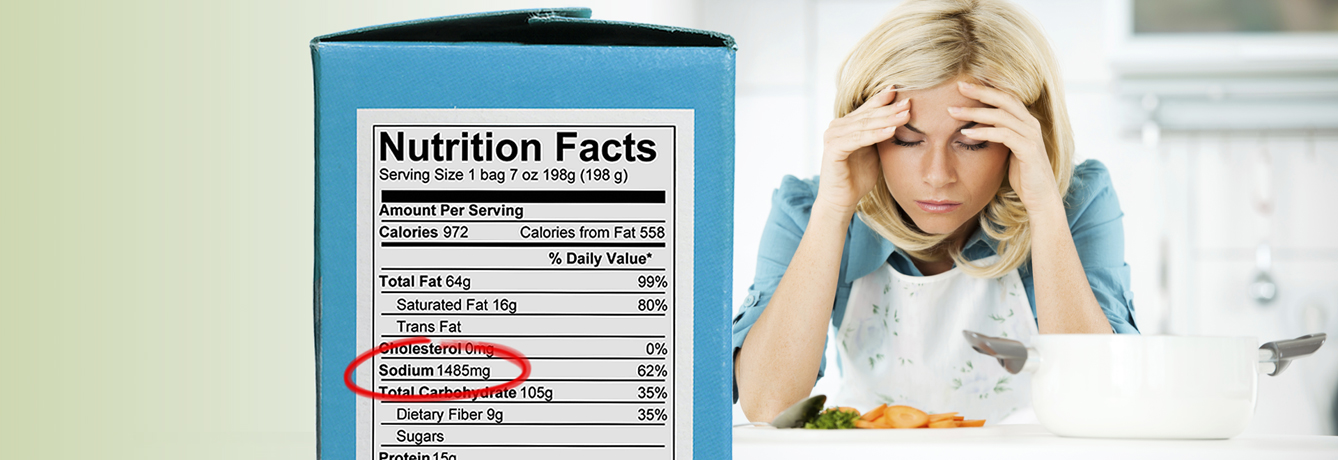If you’re often reaching for the painkillers, you’re not alone. Worldwide, an estimated 46% of adults have an active headache disorder, regularly experiencing migraines or tension-type headaches. Frequent headaches are not only uncomfortable but can lead to missed days at work and poor quality of life. Though several factors can bring on a headache, diet can play a major role in how often you experience pain. Past research suggests alcohol, skipped meals, caffeine, chocolate, and even cheese can trigger migraines or cluster headaches. Now, a 2014 Johns Hopkins study suggests the amount of sodium in the diet may be a factor, too.
The study, published in the British Medical Journal, included 390 adults with an average age of 48 years. Participants were assigned to a high (3,500 mg), medium (2,300 mg), or low (1,200 mg) sodium diet for 30 days, after which they switched to a different level sodium diet until they had completed the three diet cycle. During the last seven days of each diet, participants reported frequency and severity of headaches they experienced.
People on the high-sodium Western diet reported the most headaches, with 47% saying they experienced head pains. Comparatively, only 36% of people on a low-sodium diet based around fruits and vegetables reported having any headaches. Researchers weren’t certain why more sodium increased risk of headaches, but past studies have suggested a direct relationship between headaches and blood pressure, which is elevated by high salt.
Importantly, this study offers even more evidence on the health risks associated with high-sodium diets that we have reported, including hypertension, weakened bones, and increased risk of stomach cancer. Most Americans over-consume this nutrient, with an average daily intake equaling that of the high-sodium diet in this study. The American Heart Association recommends getting no more than 1,500 mg sodium per day, unless otherwise recommended by a doctor for a medical condition.
What are some ways to start cutting sodium from your diet?
- Rethink sandwiches, the highest contributor of sodium in the average American diet. Substitute high-sodium ingredients like cheese and deli meats for lower sodium options like avocado and grilled chicken. Make your sandwich open-faced to limit consumption of packaged breads
- Do more home-cooking. Over 75% of the sodium Americans eat comes from restaurant-prepared, processed, and prepackaged foods.
- Go easy on the salt shaker. We suggest herbs and spices or lemon to flavor your food instead. Try our Spinach and Edamame Kuku, a vegetarian Middle-Eastern dish that utilizes fresh dill and mint for vibrant flavor.
- Choose low-sodium or no-salt-added versions of packaged foods like soups and beans. Rinse canned beans and vegetables before you eat them.
- Load up on fresh fruits and vegetables, which are naturally low in sodium.
Published March 1, 2015



